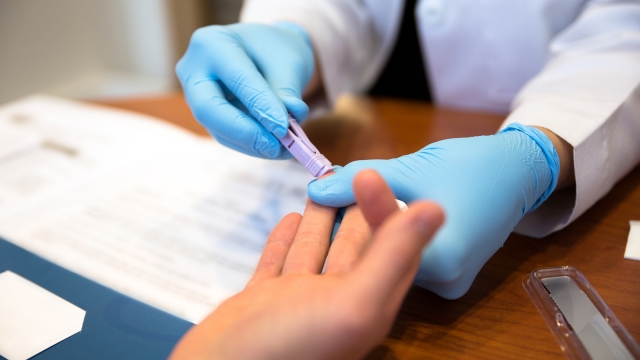
Post submitted by HRC HIV & Health Equity Program Coordinator Dimetri O’Brien
National Transgender HIV Testing Day (April 18) recognizes the importance of HIV testing and the continued focus on HIV prevention and treatment efforts among trans people.
Black and Latinx trans women have disproportionately high HIV rates and less access to culturally competent care. HIV testing is an effective prevention tool that can actively engage trans people and communities in their sexual health and wellness while empowering them to make healthy choices that improve their lives. HIV testing also allows health care providers to identify those who are living with HIV and to start treatment efforts sooner allowing them to attain viral suppression.
The goals of NTHTD are:
- Increasing status awareness among all groups of trans and non-binary people;
- Increasing capacity of local health jurisdictions to meet the HIV testing;
- Addressing the prevention and treatment needs of trans people;
- Reducing HIV and other health-related disparities experienced by trans and non-binary people, with a specific focus on trans women of color.
In the spirit of community, HRC spoke with Tori Cooper, HRC’s Director of Community Engagement for HRC’s Transgender Justice Initiative.
1. Why is National Transgender HIV Testing Day important to you?
NTHTD is important to me because there is no group of people in the United States more impacted by HIV than the transgender community, particularly Black and Brown trans women. In some places, our numbers are similar to Black and Brown cis men who have sex with men, but estimates are much higher in communities across the Deep South. And while experts say Black cis men who have sex with men have a 1 in 2 chance of acquiring HIV in their lifetimes if things don’t change, the reality is for Black trans women, estimates already have 50 percent of us living with HIV. We are a smaller group of people, so our community is impacted even more greatly in terms of life expectancy, household income and overall health outcomes.
2. How has the COVID-19 pandemic changed the trans experience?
Current news cycles are highlighting that Black, Latinx and LGBTQ people are faring far worse during the pandemic. Trans folks have historically had less access to health care and resources than the rest of the queer community. With this in mind, trans folks are more often employed in lower-wage jobs that perhaps ended early because of COVID-19. We are even more disadvantaged during a pandemic.
3. How can people engage in advocacy under the current stay at home order, specifically trans people?
We can all engage in advocacy by reaching out to our friends and support systems, safely sharing our resources and staying sheltered whenever possible, if possible. For trans and non-binary folks who are deemed essential workers and service workers, we must support their health and livelihoods by following the rules that are in place to protect us all.
This NTHTD and the rest of the year, we can engage with national and local resources that help people of trans experience and support those communities. Helpful resources include:
Centers for Disease Control and Prevention (CDC)
Act Against AIDS
Doing It Campaign
AIDS.gov
Center of Excellence for Transgender Health
Read more

